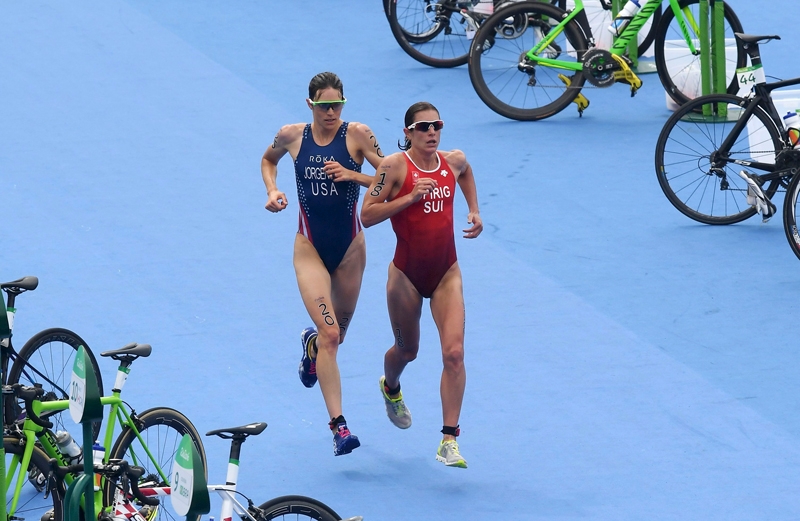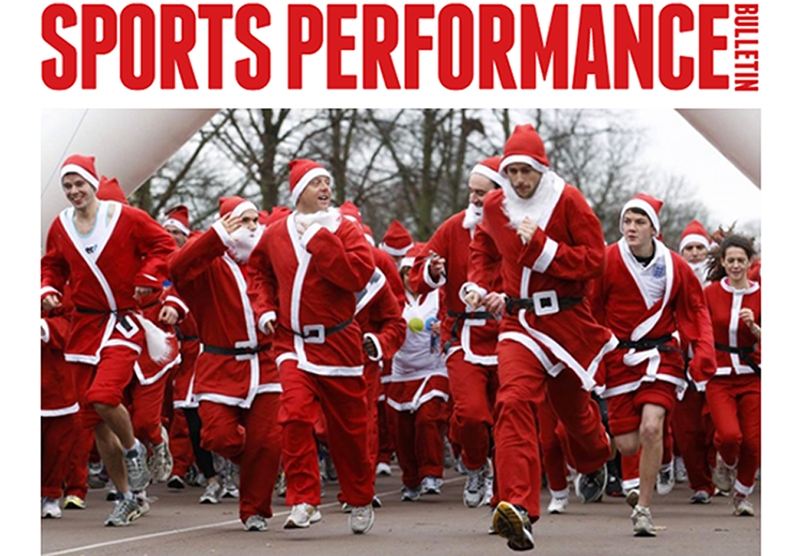Running injury: get back to where you once belonged!

One of the hardest things about picking up a running injury is knowing when you’re ready to return to running. Tracy Ward looks at strategies you can use such as self-assessment, gait analysis, and also provides a running-specific strength training programme.
Runners typically have some of the highest injury rates of all athletes; the yearly injury risk is reportedly as high as 70-80%, and this risk has not diminished over time despite advances in sports medicine knowledge(1,2). This high injury risk may be partly due to the constant, repetitive pounding forces that runners experience, but it may also be because runners often ‘accept’ they will have injuries. For example, one study found that just prior to a competitive run, 22% of recreational runners reported muscle or joint pain but were continuing to run(3). Running with pain can cause long term injury by affecting the body’s kinematics (movement patterns) and create long-term tissue damage over time.
The key factor for re-injury when returning to running is doing too much too soon(2,4). The amount of miles run and volume of time spent running must be closely monitored. If you are returning after an injury, even small running volumes become problematic because the tissues, muscles, and joints are no longer used to the trauma and are susceptible to overload. The other issue is increasing pace too quickly; many runners find that determining the ideal pace is difficult, especially when it needs to be much slower than pre-injury.
Shocking statistics
Each time the foot strikes the ground the body experiences a ground reaction force of around 2.5-3 times your body weight(2). This is the force produces from foot impact, which travels up the leg and through the skeleton. Too much of this force, either by increased running volume or pace places excess strain on your tendons. For example the Achilles tendon experiences up to 12 times body weight during footstrike and the patella (knee tendon) between 5-11 times(2)!This constant overload can produce various tendinopathy injuries (inflammation and breakdown to the tendons), patellofemoral pain syndrome (pain behind the knee cap), ilio-tibial band friction syndrome (irritation where the ilio-tibial band attaches to the outside of the knee), plantar fasciitis (inflammation of the sole of the foot), and numerous different muscle strains (4).
| Case study: Rugby player turned runner A thirty year old fit, active gentleman had always been involved in sport, and ran occasionally. He began running more frequently during his rugby off season to maintain fitness and as a substitute for normal training. After a few weeks he developed plantar fasciitis in his left foot (inflammation and tightening to the sole of the foot). Sensibly he rested from running for two weeks and symptoms resolved. He returned to running the same schedule as previous and by the fourth run the symptoms returned, but the right foot also presented with mild plantar fasciitis. These symptoms occurred because the runner increased his frequency of runs and the mileage too quickly. He did not allow the body to adjust to the increased load, and it became overloaded, producing an inflammatory reaction and tightening of the tissues. This also occurred because he did not compliment the running with a stretching programme that specifically addressed the calves and feet, as well as the usual leg muscles – eg hamstrings. Finally, on assessment, it was discovered that his gluteal (buttock) muscles were weak and caused his knees to lean slightly inwards upon running, thus placing additional loading on the feet. The treatment approach here was to provide a tailored running plan that managed his load carefully, allowing gradual build up. A full stretching routine was added after each run and strengthening exercises were advised three times per week. New trainers were advised as the runner was still running in old trainers that were not specifically for running and lacked suitable support. |
Strategies for return to running
- Load management
The ideal running schedule would consist of one day of cross-training, one full rest day, and the rest of the week doing training runs of various distances. Cross-training involves substituting running with a training type that’s gentle on the joints and works the muscles in a slightly different way such as swimming or cycling. Symptoms should be monitored from the start of a run. Any symptoms that extend beyond a score of 3 out of 10 on a pain scale (see figure 1) and do not abolish once warmed up should be a signal to stop running.
As well as cross-training, variety in running environments is also beneficial to avoid repetitive trauma to the body. This can be done by changing the running surface regularly for a mixture of road, grass, trail etc, and alternating running shoes. One study showed that those who used multiple pairs of trainers had 39% less injuries compared to those who always ran in the same shoes(7).
Figure 1: Pain scale

- Movement screening
Ensuring adequate hip, ankle and big toe mobility can reduce the risk of future injury. The hip must be able to extend far enough backwards, so that you get enough drive forward with the leg. The ankle must dorsiflex (action of pulling your toes up towards you) to propel the body forwards, and reduce stress to the ankle ligaments and knee/foot muscles. Finally, the big toe requires a big push off for power. Should any of these actions be restricted, the whole biomechanics of your running pattern (gait) will be affected and risk of injury will be higher.
- Gait
Contrary to popular belief however, strength training alone does not alter gait patterns or alleviate these symptoms. It only improves the mechanics of the exercise performed(11). This is not to say strength training is unimportant - simply that it will not change running gait by itself.
Addressing the source of the problem by providing gait retraining has been found highly effective in reducing altered and problematical biomechanics, as well as significantly impacting on pain and function. Studies show that these results were long-term in nature, being maintained at 1 month post treatment, and proving an effective treatment strategy for longer-term and change(12).
Gait retraining can be performed by various ‘cueing methods’ that stimulate the central nervous system (see box 1). Verbal cueing is appropriate for beginners; however an external cueing mechanism such as the use of a metronome, treadmill feedback or visual aids with a mirror have been shown to be more beneficial in developing motor skills and ensuring a long-term carryover(13).
Box 1: Clinical application of gait retraining
- Cadence: This is the running step rate - ie how fast you hit the ground with each foot and how many steps per minute you take
- Stride: This is the length of your step
- Stride pattern: This is the order in which each part of your foot strikes the ground
Increasing cadence is not the same as increasing stride. Increasing your stride will overload the hip and knee joints as there will be a greater impact on landing with bigger steps; this may also alter the way in which you land (stride pattern). Stride pattern matters too; if you switch from rear foot to forefoot landing there is increased loading at the calf and Achilles tendon, while switching from forefoot to rear foot increases the loading at the hips and knees. Ideally, you should identify the structure being overloaded and be guided by this on necessary gait changes.
- Shoe selection
As a rule of thumb, runners who land more on their forefoot should be prescribed trainers with sufficient midsole cushioning and with a flatter heel-to-toe ramp. Runners who overpronate (typically with a heel strike and then roll the foot and ankle inwards excessively) should be given trainers that oppose this with movement control with a stronger heel counter (see figure 2). Ultimately, retraining gait and cadence can help address both step length and foot strike, and provide a more comprehensive treatment than addressing one aspect alone.
Figure 2: Overpronation and heel counter design

Self-assessment guide
Returning to running for the first time following injury will always require caution, and there is no full guarantee that you will be ready. It is therefore important to plan and prepare ahead of running to avoid any preventable repercussions. The questionnaire below provides a few simple guidelines you can follow to self-assess yourself in order to provide more insight into your readiness for running. This is not fool-proof and any other symptoms experienced should always be considered, even if you answer yes to everything. If you remain unsure, you should always consult a professional.Self-assessment guide for return-to-running readiness (Answer these 10 questions with a simple yes or no):
Current status:
- On a scale of 0-10 (with 10 being the greatest pain – see figure 1) would you rate your pain a three or less?
- Can you freely move your hips, knees, and ankles in all their directions without any pain or restrictions?
- Can you hop on each leg, one leg at a time without any hesitation, pain, or impairment?
- Have you completed a strengthening programme for the affected area, AND for return to running?
- Have you completed a programme of stretching and mobility exercises for your hips, knees, and ankles?
- Have you had someone assess your gait pattern to check for any altered biomechanics?
- Have you prepared a specific running plan that ensures you do not increase your mileage by more than 7-10% per week?
- Does your running plan involve one day per week of exercise other than running, AND one full rest day?
- Have you considered alternative running surfaces and written this in to your plan?
- Have you checked your trainers for excess wear and tear? If they present with damage have you replaced them or bought a second pair to alternate with?
Strength exercise programme
Specific strength training conditions the muscles to tolerate the repetitive loads of running. The muscles and tissues develop a greater tolerance to changes in speed, power and endurance, allowing you to run further and faster without injury. Indeed, studies show that those who complete strength training alongside running have a 50% reduction in injury rates(16). Here are some examples of exercises that work the quadriceps, hamstrings, gluteals, and core muscles directly for running.

Final checklist
The biggest problem when returning to running is to trying too much too soon. Here is a summary of the recommendations for an injury-free return to running:- Be aware of your load management - don’t increase volume or pace by more than 10% per week.
- Reserve one day a week for cross-training in a different activity and one day for complete rest.
- Have a gait assessment carried out to check for any abnormal biomechanics.
- Strength training is essential in every runner’s weekly schedule – ensure you place a greater emphasis on it during and initially after injury.
References
- Sports Med. 2012; 42(10):891-905
- Med Sci Sports Exerc. 2004; 36(5):845-849
- J of Physiother. 2012; 57:179-182
- The Int J of Sports Phys Ther. 2013; 8(2):172-179
- J Orthop Sports Phys Ther. 2014; 44(1): 739-747
- Sports Med. 2007; 37(4-5): 437-439
- Scand J Med Sci Sports. 2015; 25(1): 110-115
- J Strength Cond Res. 2015 Oct;29(10):2808-15
- Man Ther. 2015; 20(1): 189-193
- Med Sci Sports Exerc. 2013; 45(6): 1120-1124
- J Orthop Sports Phys Ther. 2011; 41(9): 625-632
- Br J Sports Med. 2011; 45(9): 691-696
- Clin Biomech. 2010; 27(10): 1045-1051
- Gait Posture. 2012; 36(2): 231-235
- J Foot Ankle Res. 2014; 7: 53-65
- B J Sports Med. 2014; 48(11): 871-877
You need to be logged in to continue reading.
Please register for limited access or take a 30-day risk-free trial of Sports Performance Bulletin to experience the full benefits of a subscription. TAKE A RISK-FREE TRIAL
TAKE A RISK-FREE TRIAL
Newsletter Sign Up
Testimonials
Dr. Alexandra Fandetti-Robin, Back & Body Chiropractic
Elspeth Cowell MSCh DpodM SRCh HCPC reg
William Hunter, Nuffield Health
Further reading
Newsletter Sign Up
Coaches Testimonials
Dr. Alexandra Fandetti-Robin, Back & Body Chiropractic
Elspeth Cowell MSCh DpodM SRCh HCPC reg
William Hunter, Nuffield Health
Keep up with latest sports science research and apply it to maximize performance
Today you have the chance to join a group of athletes, and sports coaches/trainers who all have something special in common...
They use the latest research to improve performance for themselves and their clients - both athletes and sports teams - with help from global specialists in the fields of sports science, sports medicine and sports psychology.
They do this by reading Sports Performance Bulletin, an easy-to-digest but serious-minded journal dedicated to high performance sports. SPB offers a wealth of information and insight into the latest research, in an easily-accessible and understood format, along with a wealth of practical recommendations.
*includes 3 coaching manuals
Get Inspired
All the latest techniques and approaches
Sports Performance Bulletin helps dedicated endurance athletes improve their performance. Sense-checking the latest sports science research, and sourcing evidence and case studies to support findings, Sports Performance Bulletin turns proven insights into easily digestible practical advice. Supporting athletes, coaches and professionals who wish to ensure their guidance and programmes are kept right up to date and based on credible science.









